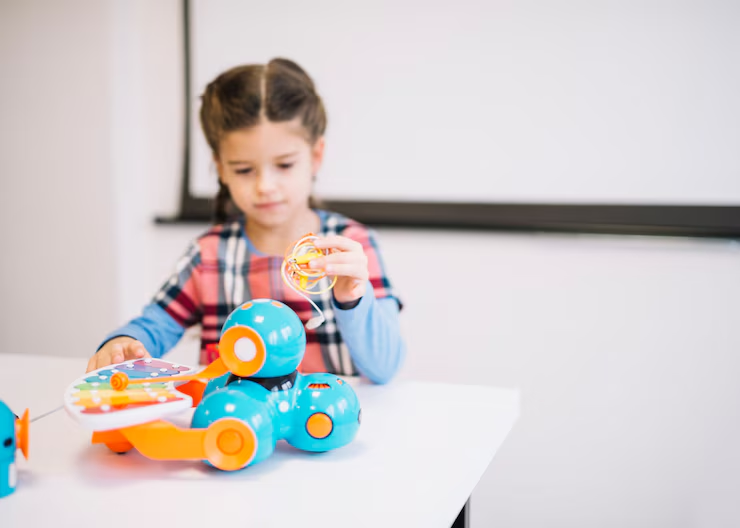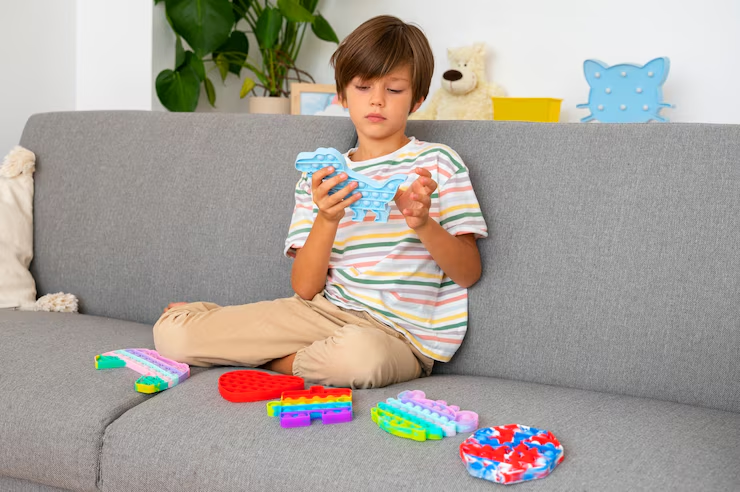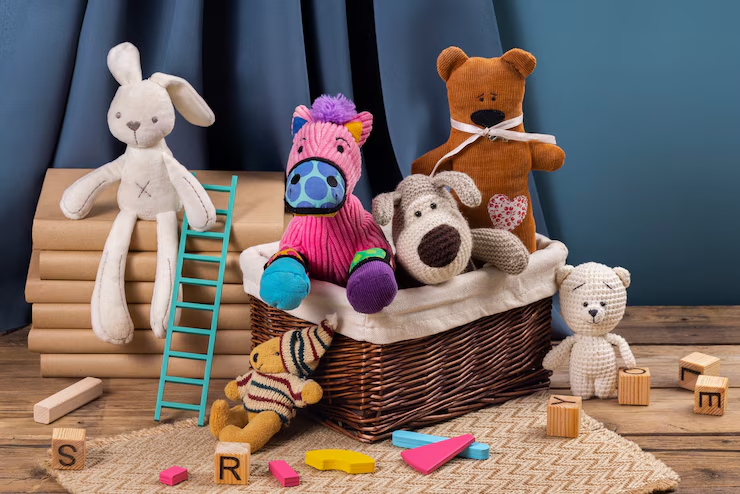Only Children Know The Indispensability Of Toys
Toys are far more than playthings; they are powerful tools for shaping children’s cognitive, emotional and physical development. 6 to 9 years old is a critical period for children’s growth, and choosing toys that are appropriate for their age is essential to meet their changing needs. Among them, learning toys for 6-year-old children, as well as carefully selected gifts for 9-year-old girls and carefully selected sports toys for 7-year-old children are now being discussed.
Giving toys as gifts to children to express emotions, while accompanying play is an important topic for promoting parent-child relationships. Toys undeniably play a key role in promoting intellectual, emotional and physical development. Finding proven and theoretically supported research perspectives, we explored why these toys are indispensable for young learners.
The Importance of Learning Toys for 6-Year-Olds
At age six, children are at a pivotal stage, transitioning from unstructured play to more formal learning environments like elementary school. Their curiosity is boundless, and their cognitive abilities are rapidly expanding. Learning toys, designed to stimulate intellectual growth, are crucial during this phase. But are they necessary for children aged 6-9, and do they genuinely aid intellectual development?
Scientific research supports the value of learning toys. A study in the Journal of Infant and Child Development found that children who played with educational toys showed improved cognitive abilities, including enhanced problem-solving and critical thinking skills. STEM toys like the 4M KidzRobotix tabletop robot encourage children to explore engineering concepts by building a moving crab, fostering an early interest in science. Similarly, puzzles like the Puzzle Huddle “Chemistry Girls” puzzle, which features black children playing professional roles, can foster observation and cultural awareness with the right number of pieces for 6-year-olds.
The counterargument is that formal education alone is enough to promote learning and that toys are merely for fun. However, this overlooks the unique role of play in childhood development. According to Safe Search Kids, learning toys activate cognitive and physical milestones, making learning engaging and intuitive.
Unlike structured classroom settings, toys allow children to explore at their own pace, cultivating a love for learning that formal education may not always achieve. For 6-year-old girl gifts or the best toys for 6-year-old boys, options like LEGO sets or interactive games like Botley the Coding Robot blend fun with education, ensuring children develop essential skills while enjoying playtime (Fat Brain Toys).
| Toy Type | Example | Benefits |
|---|---|---|
| STEM Kits | 4M KidzRobotix Table Top Robot | Develops engineering and problem-solving skills |
| Puzzles | Puzzle Huddle’s Chemistry Girl Puzzle | Enhances observation and cultural awareness |
| Coding Toys | Botley the Coding Robot | Introduces programming and logical thinking |

Emotional Value of Toys for Girls Aged 6-9
Do toys hold emotional value for female children in this age group? The answer is a resounding yes. Toys, particularly dolls and stuffed animals, often serve as transitional objects that provide comfort and security, helping girls navigate their emotions and develop independence.
A study by ScienceDirect shows that children attribute psychological states to toys they are emotionally attached to, suggesting that toys can create deep connections with children, thereby promoting emotional development. For example, a stuffed animal or doll can become a confidant for a 6-year-old girl, allowing her to practice empathy through role play.This emotional bond is particularly significant for 6-year-old girl gifts, where items like soft plush toys or interactive dolls can foster a sense of security and encourage social skills.
Some may argue that toys are merely objects without lasting emotional impact. However, Women’s Health Today cites research by Winnicott (1953) that suggests comfort objects symbolize the presence of a caregiver and can help children cope with stress and explore their surroundings with confidence. For girls ages 6-9, these toys are more than just playthings; they are tools for emotional growth and thoughtful gifts that resonate deeply with them.
Maybe you have trouble choosing toys for children aged 6-9. Big Mo’s Toys is recommended. It offers a wide variety of children’s toys, including sensory toys, STEM toys, role-playing toys and party favors. Including educational toys, stress relief toys and themed party sets.
Gifts for 9-Year-Old Girls: Unique and Unusual Options
As children reach age nine, their interests become more defined, and they seek toys that challenge their skills or align with their passions. Unusual gifts for 9-year-old girls can spark creativity and support their development in unique ways. For example, art kits like the Tulip One-Step Tie-Dye Party Kit allow girls to create vibrant designs and develop their artistic expression. Science experiment kits, such as those involving simple chemistry or robotics, can spark curiosity and introduce STEM concepts in an engaging format.Books tailored to their interests, like adventure or mystery series, encourage reading and critical thinking.
These gifts cater to the developmental needs of 9-year-olds, who are capable of tackling more complex tasks. According to Good Housekeeping, 9-year-olds can do “adult” activities like crafting or experimenting, so these unusual gifts for 9-year-old girls are both fun and educational.By choosing gifts that align with their interests, parents can nurture their passions and support their intellectual and creative growth.
| Gift Type | Example | Benefits |
|---|---|---|
| Art Kits | Tulip One-Step Tie-Dye Party Kit | Encourages creativity and artistic expression |
| Science Kits | Chemistry or Robotics Experiment Kits | Introduces STEM concepts and problem-solving |
| Books | Adventure or Mystery Series | Promotes reading and critical thinking |

Sports Toys for 7-Year-Olds: Balancing Physical and Cognitive Growth
Do boys aged 6-9 prefer sports toys or learning toys? Research suggests that boys in this age group often gravitate toward physical activities, Prepare toys for 7-year-old boys that are particularly engaging, such as sports toys. Toys like glow-in-the-dark basketballs, hanging footballs, or archery sets can encourage active play and social interaction.
The Natural Child Project notes that boys tend to engage in rough-and-tumble play, which supports social development through teamwork and competition. Sports toys align with this preference, promoting physical health and coordination. For example, a mini basketball hoop can provide hours of active fun while teaching children about goal-setting and perseverance.
However, learning toys remain crucial for cognitive development. A meta-analysis in Archives of Sexual Behavior found that boys prefer gender-typical toys like vehicles and action-oriented items, but this doesn’t diminish the value of educational toys. Toys like LEGO sets or board games like Sleeping Queens, which combine math and strategy, offer intellectual stimulation while remaining engaging. The key is balance—providing toys for boys age 7 that cater to both their active nature and cognitive growth ensures well-rounded development.
Some argue that gender preferences in toys are outdated or socially constructed. While individual preferences vary, studies consistently show that boys often prefer active play, influenced by both biological and environmental factors. Offering a mix of sports and learning toys allows parents to honor these preferences while supporting diverse developmental needs.

Safety Considerations for Toys
Are there safety hazards for children aged 6-9 playing with toys? While toys for this age group are designed with fewer risks than those for younger children, vigilance is still necessary. Common hazards include small parts that could pose choking risks, sharp edges, or poorly constructed riding toys that may lead to falls.
According to Safe Kids Worldwide, in 2016, 174,100 children under 15 were treated in emergency departments for toy-related injuries, highlighting the importance of safety. For 6- to 9-year-olds, parents should ensure toys meet safety standards, such as those set by the American Society for Testing and Materials (ASTM). Riding toys, like scooters or bikes, require safety gear like helmets to prevent injuries. Additionally, toys with button batteries or magnets should be avoided, as they can cause severe harm if swallowed.
| Age Group | Common Hazards | Safety Tips |
|---|---|---|
| 6-9 Years | Small parts, sharp edges, unstable riding toys | Check for ASTM safety labels, ensure age-appropriateness, provide safety gear |
Toys Are A Vehicle For Affection, Fun And Companionship
Age-appropriate toys are essential for children aged 6-9, providing both fun and development. For 6-year-olds, learning toys like STEM sets and puzzles can promote cognitive development; while emotional toys can provide comfort and support the development of social skills, especially for girls. For 9-year-old girls, special gifts like art or science sets can foster creativity and curiosity. For 7-year-old boys, sports toys can satisfy their active nature, but learning toys are just as important for intellectual development. Safety remains a top priority, and we urge parents to choose toys that match their children’s abilities and meet strict safety standards.
By choosing toys thoughtfully, parents can unlock the power of play, ensuring children not only enjoy their toys but also grow into confident, curious, and capable individuals. Whether it’s finding the best toys for 6-year-old boys, selecting 6-year-old girl gifts, exploring unusual gifts for 9-year-old girls, or picking toys for boys age 7, the right toys can make a lasting impact on a child’s development.

